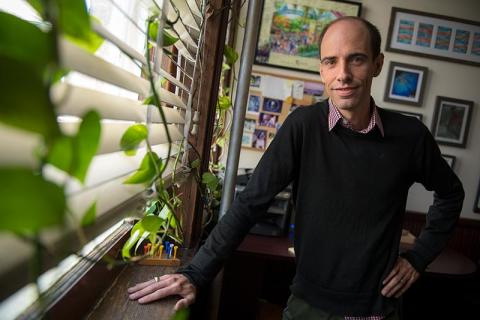Tulane research aids in reading Earth’s diary
A Tulane University geologist has concluded a study on climate change, which will help develop climate models that simulate the effects of climate change and the Earth’s response to it.
The study by co-author Kyle Straub, an associate professor in the Department of Earth and Environmental Sciences, has been published in Science Advances, an open-access journal of the American Association for the Advancement of Science. Straub’s co-author is Brady Foreman, a geologist at Western Washington State University.
Based on results from small-scale deltas constructed in a laboratory on Tulane’s uptown campus, the study details methods of defining climate records based on extractions from layered sedimentary rocks. These results are then used to help characterize a climate change event that occurred over 50 million years ago from sedimentary sequences located in the Bighorn Basin of northwest Wyoming.
"There have been many climate change events in Earth’s past that were not induced by human activity.”
Kyle Straub
Straub said the research focuses on how to construct records of past climate change from layers in sedimentary rocks, though not necessarily how the Earth will respond in the near future to climate change.
“If we wish to predict how the Earth will respond in the future to climate change, it would be great if we could construct records of these responses from the past,” Straub said. “For example, there have been many climate change events in Earth’s past that were not induced by human activity.”
He said Earth keeps a kind of diary of how it responds to these events, noting the chemical signatures in the beds of sediment deposited by rivers, ocean currents and wind.
“Unfortunately, Earth’s diary is not perfect. The diary is filled with many many ‘holes’ resulting from days in which rivers either didn’t deposit sediment or resulting from periods of erosion when bits or pages of the diary were ripped out. Thus the records are riddled with gaps.”
He said the gaps make the record too incomplete to determine changes in climate that might happen over a matter of days or years, “but the record is complete enough to extract changes in climate that might happen over thousands to millions of years.”

